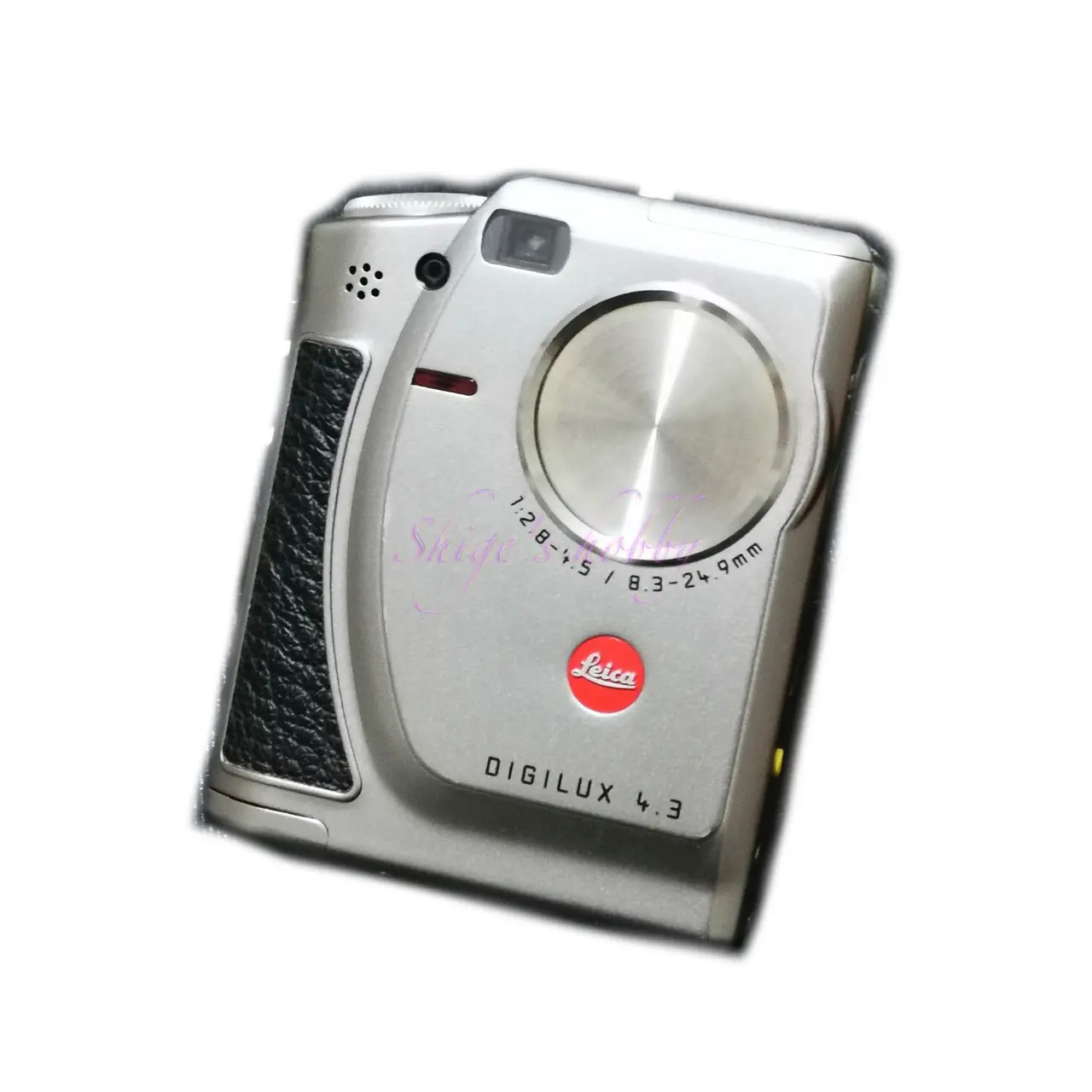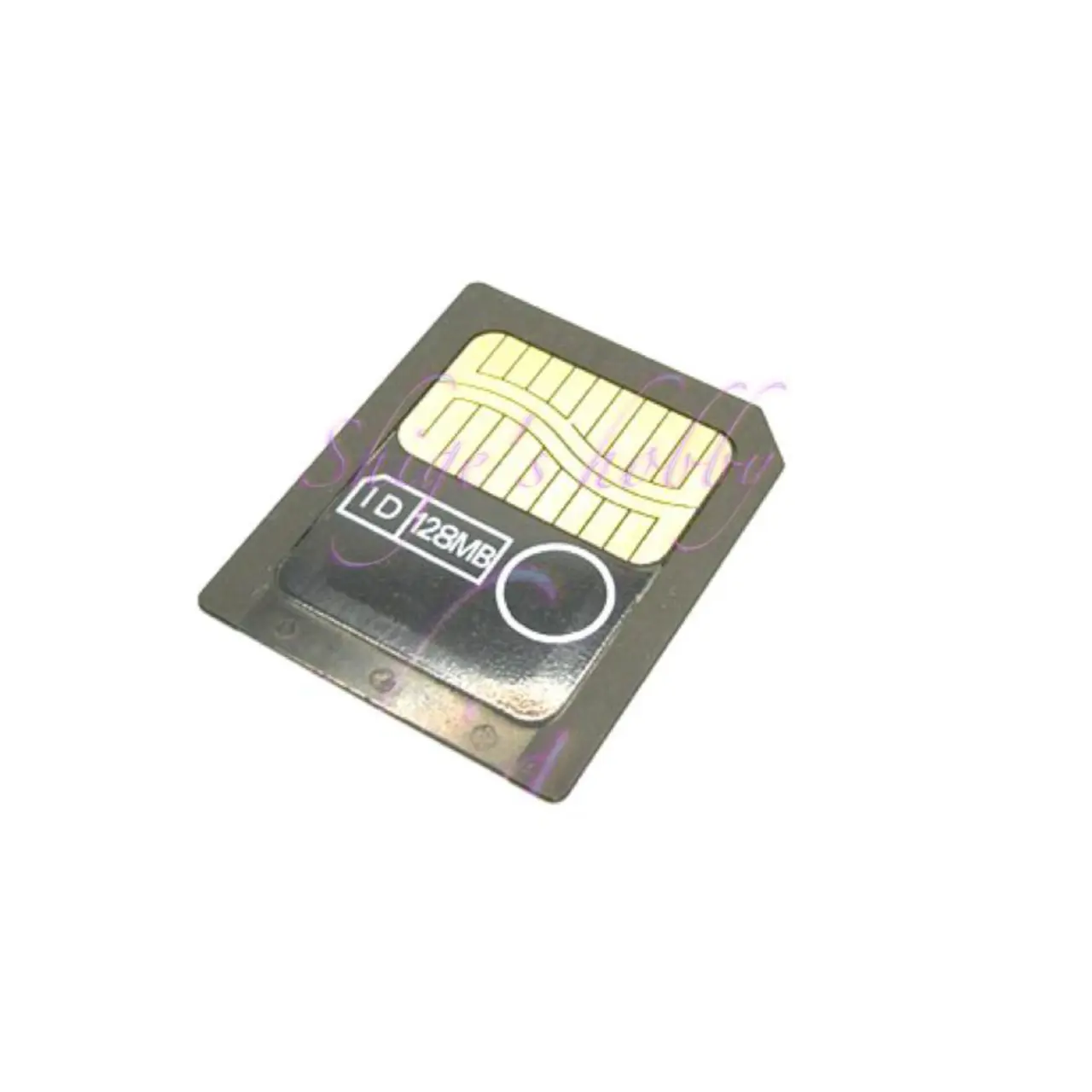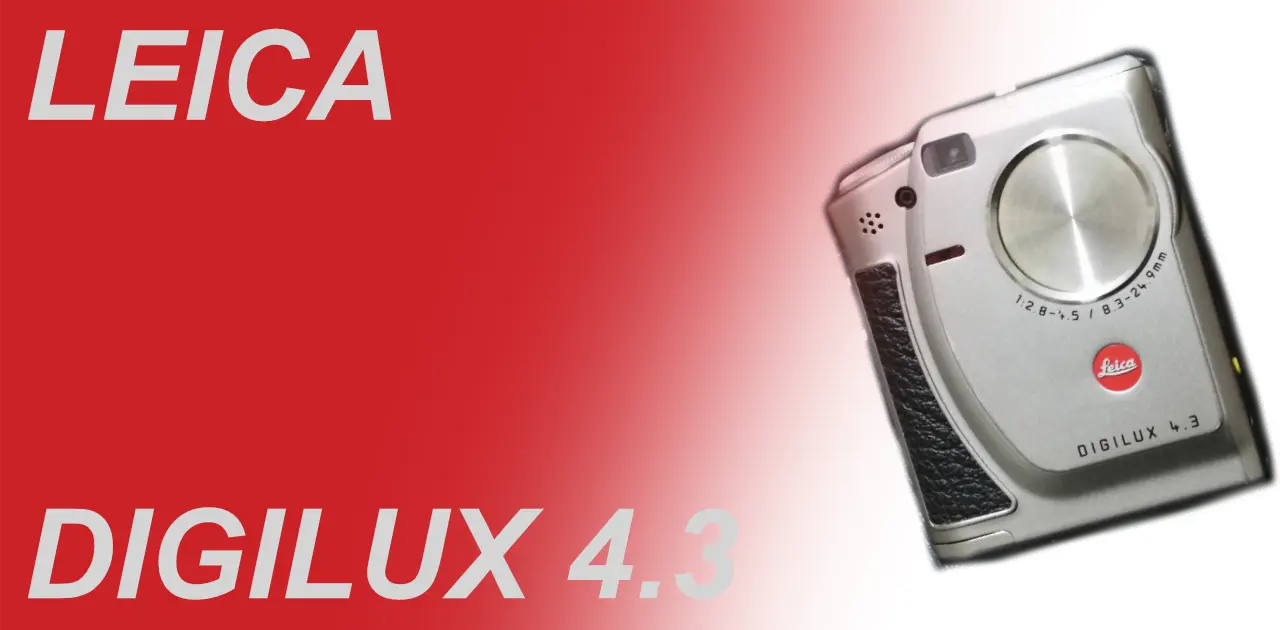Last updated on 2025-10-26
A reviews and photo examples of the LEICA DIGILUX 4.3
- Please see the disclaimer regarding advertising here.
- Italicized links in the text are advertisement links that take you to other sites.
Table of contents
Gallery
Review


1.Overview
The LEICA DIGILUX 4.3 is a compact digital camera released in 2000 that has a Leica-customized appearance and startup screen based on the FUJIFILM FinePix 4700Z.
The main specifications are as follows, and detailed specifications are listed in the table.
- Sensor pixel count: 2.4 megapixels
- Sensor type: 1/1.7-inch Super CCD Honeycomb
- 35mm equivalent focal length: 36mm to 108mm
- Aperture value: F2.8 to F4.5
- Recording media: SmartMedia
- Battery: 2 x AA batteries
The zoom lens installed in the DIGILUX 4.3 seems to be the same as the previous model, the DIGILUX ZOOM, and since the sensor size of the DIGILUX 4.3 is slightly larger, it is closer to wide-angle in 35mm format.
The battery of the DIGILUX 4.3 is the same as that of the first DIGILUX (unbranded), which was the camera two cameras before it, and uses two AA batteries including a nickel-metal hydride battery. Only the DIGILIUX Zoom, the second-generation DIGILUX, uses a kamaboko-shaped NP-80 lithium-ion battery. As an aside, in addition to the Fujifilm-type NP-80, there is also a Casio-type NP-80 battery, so you need to check the shape when purchasing.
2.Usgae
The focal length is 36mm to 108mm, a 3x zoom, with the wide-angle end at 36mm, giving it the feel of an old digital camera. The aperture is automatically switched between F2.8 and F4.5, with only two aperture values. This was not the era when cameras were equipped with image stabilization, so you need to be careful of camera shake when it gets a little dark.
The lens does not correct distortion very well, and this was before software correction was actively used in compact digital cameras, so there are focal lengths where distortion is noticeable in JPEG images.
The customization from the FUJIFILM-FinePix4700Z is limited to the exterior, so the color and taste of the captured images remain the rich nature of FUJIFILM, and it does not feel like the camera is actively involved in the creation of the image.
The taste is different from LEICA-manufactured compact digital cameras such as the LEICA X1.
If you buy a used camera with a SmartMedia card, it’s not too hard if it came with the camera, but if you don’t have one, you’ll need to look for one on the used market, and be careful because SmartMedia cards on the used market can be expensive.
I bought this camera used, but unfortunately, on the third day after I got it, it developed a lens shutter problem, which is common with this camera, and the lens could no longer be stored in the camera. Since the manufacturer’s warranty had already expired, the camera was taken back by the place I bought it from and I was given a refund.
In general, the gears on the retractable lenses of old Fujifilm compact digital cameras tend to break easily. I have used several old Fujifilm compact digital cameras, but as I used them more frequently, they would give me an error that the lens could not be retracted and break down. Panasonic and Sony also have lenses with similar mechanisms, but they never break down to this extent.
The opening screen when you turn the camera on is Leica custom, but the camera itself is still FUJIFILM, and if you have used a compact digital camera from the same company, you will have no trouble using it. The red badge on the outside looks like it was placed in an empty space, so it stands out.
3.Summary
To sum up the DIGILUX 4.3, the images it outputs are indistinguishable from Fujifilm FinePix 4700Z.
Fujifilm’s unique vertical body camera is unique among the diverse camera designs of the early digital camera era.
And with its Leica design and red badge, it’s one Leica collectors will want to have on hand. However, if you value practicality, the lack of durability of the lens and deterioration of each part over time mean that stable operation is not expected, making this a camera that is not worth the high price.
Specifications and series camera comparison
| Model name | DIGILUX4.3 | DIGILUX Zoom | DIGILUX |
| Camera effective pixel count | 2.4 million pixels | 1.5 million pixels | 1.5 million pixels |
| Focal length (35mm equivalent) | 36~108mm | 38〜114mm | 35mm |
| Sensor size | 1/1.7 | 1/2.2 | 1/2 |
| Back LCD | 2 inch 130,000 pixels | 2 inch 130,000 pixels | 2 inch 110,000 pixels |
| View finder | Optical Viewfinder | Optical Viewfinder | Optical Viewfinder |
| Battery | 2 AA type | NP-80 | 2 AA type |
| Recorded media | Smart media | Smart media | Smart media |
| Size | 78 × 97.5 × 32.9 mm | 79 x 98 x 33 mm | 80 x 101 x 33 mm |
| Weight(Only body) | 255g | 230g | 245g |
| Release date | 2000.9 | 1999 | 1998.10.16 |
| OEM model name | FinePix 4700Z | FinePix 1700Z | FinePix 700 |
Reference links
- DIGILUX 4.3 description in LeicaWiki
- DIGILUX Zoom description in LeicaWiki
- DIGILUX description in LeicaWiki
Update history
- 2025.3.26
- 2024.02.19
Affiliate
- Please see the disclaimer regarding advertising here.
- Italicized links in the text are advertisement links that take you to other sites.
- Leica R lens・Ads by ebay
- Leica M lens・Ads by ebay
- Leica TL・Ads by ebay
- Leica SL・Ads by ebay

Amazon Prime Sale



Be First to Comment